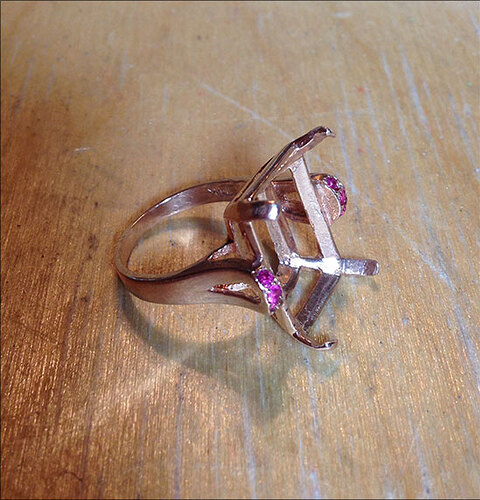Hi all,
a friend of mine has a 14K rose gold ring with a huge aquamarine
that she’d had taken out to reset in another ring because she’d
outgrown the original. Those darn rings are always shrinking!  But
But
now she’s decided she wants the aquamarine back in the original ring
(I think it was from her mother), but hasn’t had time to take it to
a jeweler. I looked at it and said I could easily set the stone back
in and I’d do it as a favor. She’s helped me out a great deal in the
past, including helping me sell my work. Looking at the ring, it has
the typical commercial cast look where the outside is polished
decently (but with some scratches I want to buff out), but the
inside of the setting looks horrible, so I want to clean that up for
her. And I know that she can’t wear it now because it’s about a size
too small, so I want to see if I can enlarge it to fit her on my
ring mandrel. I don’t want to cut it up and torch it or buy more
equipment for it. I easily make my rings a size larger on my mandrel
all the time, but I either work in sterling or 18K, and it’s always
fabricated from wire or sheet. And no thinner than 14G. This ring is
cast, and it is around 18G flat at the thinnest point, width 2.3mm.
The ring shank gets gradually a little thicker and wider towards the
top and opens up to have a very large emerald basket setting for the
aquamarine. My rings that have been easily stretching have a shank
that is a continuous piece that I solder a setting and decorations
to. And I don’t think I can anneal the ring because there are three
1.5mm stones on either side of the setting that are supposed to be
pink sapphires, but who really knows? They could be glass-filled
God-knows-what for all I know. The owner really wouldn’t know
either. Is this something that I could attempt to do? And yes, I
will discuss it with the owner about any risks before I attempt it.
I would really appreciate any advice on this. Thanks!
